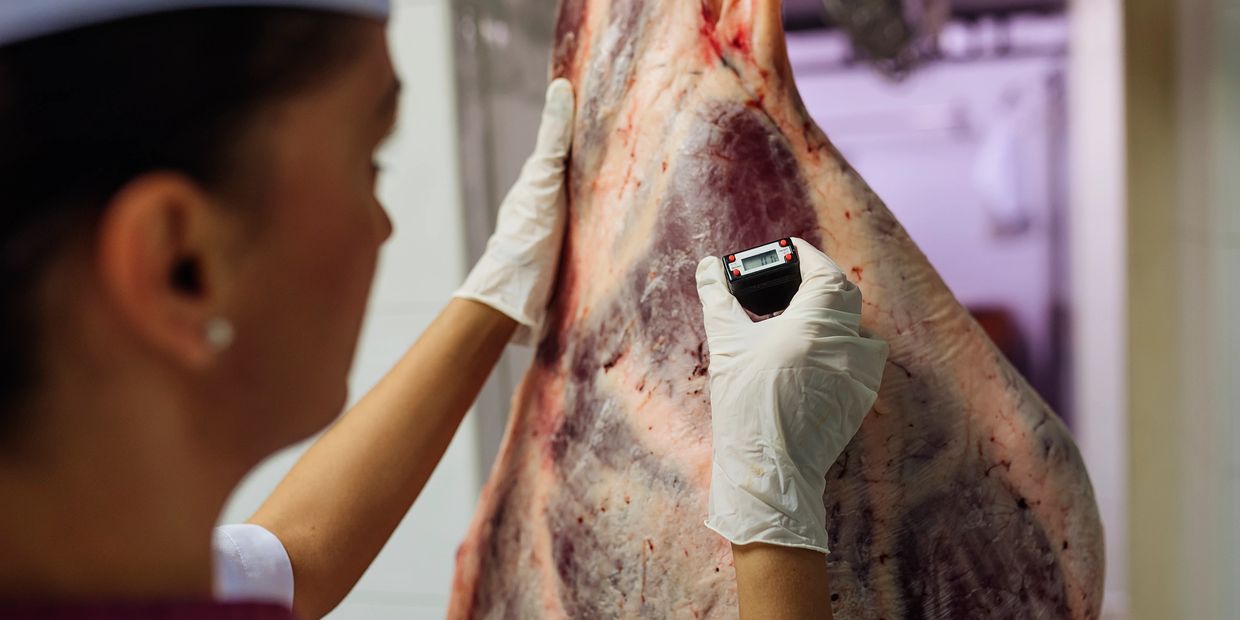Know the Rules. Stay Compliant.

The USDA retail exemption and SNAP/EBT authorization are powerful tools—but only if you follow the law step by step.
Here’s what you need to know.
What the Retail Exemption Allows
Under 9 CFR 303.1(d), ranchers and farmers may perform operations “traditionally conducted at retail stores,” including:
- Cutting USDA-inspected carcasses and sub-primals into retail cuts.
- Grinding into hamburger.
- Wrapping, packaging, labeling, and freezing.
Important:
- Slaughter is not allowed under the retail exemption.
- Only meat that has already passed USDA inspection may be cut and sold.
Sales Limits Under the Retail Exemption
- At least 75% of your sales must be direct to household consumers.
- No more than 25% of your sales may go to restaurants, hotels, or institutions.
- Even then, sales to non-household customers are capped at dollar limits set annually by FSIS.
Current Non-Household Limits (2025):
- $103,600 for red meat.
- $74,800 for poultry.
Highlight Box:
✔ Track your sales carefully to stay compliant.
How to Label Retail Exempt Meat
- Products cannot carry the USDA “Inspected & Passed” legend.
- Labels must not be misleading.
- Safe handling instructions are required.
- Labels should include: product name, weight, farm/processor identity, and storage guidance.
“If you sell exempt, your product must be labeled clearly—but never as USDA-inspected.”
Keep Standards High
Even if your butcher shop is exempt from continuous federal inspection, you are still responsible for food safety. Follow HACCP-style best practices:
- Keep raw and cooked products separate.
- Maintain cold storage at safe temperatures.
- Use proper cleaning and sanitizing protocols.
- Train staff in safe handling procedures.
- Keep written sanitation logs.
Documentation Is Your Best Defense
Maintain detailed records of:
- Every carcass or sub-primal received (source, date, inspection plant).
- Every cut and batch produced.
- Sales volumes and destinations.
- Sanitation and temperature logs.
Highlight Box:
✔ If FSIS or state officials visit, your records prove compliance.
Custom Exemption Rules
Custom slaughter and processing is allowed for animals owned by individual customers.
- Meat must be stamped “NOT FOR SALE.”
- It may only be consumed by the owner, their family, and household guests.
- It cannot be sold at your farm store or market.
Know Your State Rules
- 27 states run their own USDA-approved inspection programs.
- State-inspected meat may only be sold within that state, unless the state participates in the Cooperative Interstate Shipment (CIS) Program.
- USDA-inspected meat may be sold across state lines.
Tip:
Always check with your state agriculture department to confirm how they interpret retail exemption rules.
Quick Checklist for Staying Legal
- Use only USDA-inspected carcasses or sub-primals.
- No slaughter under the retail exemption.
- Keep at least 75% of sales to consumers.
- Stay under FSIS dollar thresholds.
- Label properly - no USDA inspection legend.
- Maintain strict sanitation and record keeping.
- Know your state’s specific rules.
Compliance = Freedom
By following these rules, you can confidently build your on-farm butcher shop and market - knowing you are protected by federal law.
This website uses cookies.
We use cookies to analyze website traffic and optimize your website experience. By accepting our use of cookies, your data will be aggregated with all other user data.